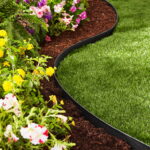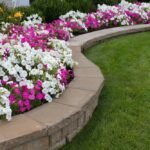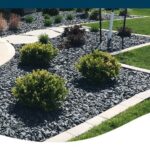Landscaping borders are an important element in creating a well-designed and cohesive outdoor space. Borders not only define the edges of gardens, pathways, and other landscape features, but they also add structure, balance, and visual interest to the overall design.
One of the most common types of landscaping borders is a simple edge created by laying bricks, stones, or pavers along the perimeter of a garden bed or pathway. These borders can be straight or curved, depending on the style of the landscape, and can add a clean and polished look to the space. They also help to contain mulch, soil, and plants within the designated area, preventing them from spilling over onto the lawn or other parts of the yard.
Another popular landscaping border option is a low hedge or shrubbery, such as boxwood or lavender, that can be planted along the edge of a garden bed or walkway. These living borders not only provide a natural and organic look to the landscape but also create a sense of enclosure and privacy. They can also help to define different areas of the yard and create visual interest with their varying heights, colors, and textures.
In addition to traditional options like stones and shrubs, there are also more creative and contemporary landscaping border ideas. For example, metal or plastic garden edging can be used to create sleek and modern borders that are easy to install and maintain. These edging materials come in a variety of colors and styles, allowing homeowners to customize their borders to suit their personal aesthetic preferences.
Some homeowners choose to use recycled or repurposed materials for their landscaping borders, such as old railway ties, reclaimed wood, or even wine bottles. These unique borders add a rustic and eco-friendly touch to the landscape and can be a great way to incorporate a personal touch into the design. They also showcase the homeowner’s commitment to sustainability and creativity in their landscaping efforts.
Overall, landscaping borders play a crucial role in enhancing the beauty and functionality of outdoor spaces. Whether using traditional materials like bricks and shrubs or opting for more contemporary options like metal edging or recycled materials, a well-designed border can help to define and enhance garden beds, pathways, and other landscape features. By carefully selecting and installing borders that complement the overall design of the landscape, homeowners can create a visually appealing and cohesive outdoor space that is both functional and aesthetically pleasing.
















